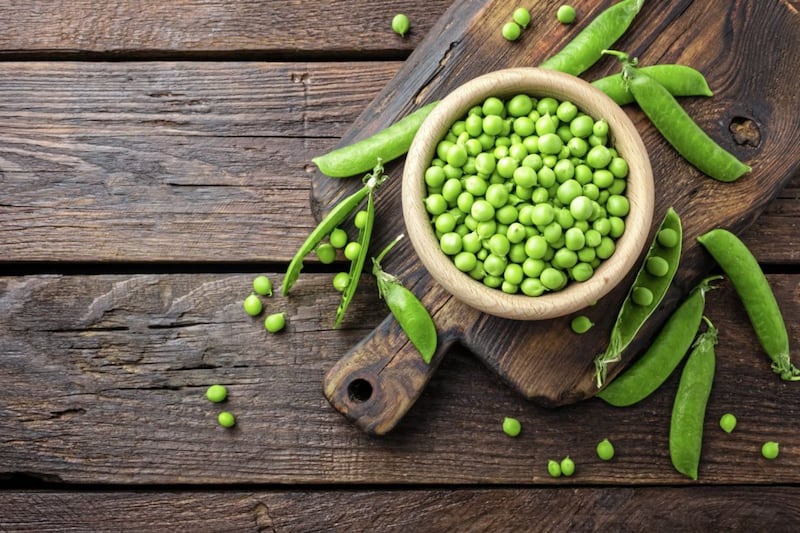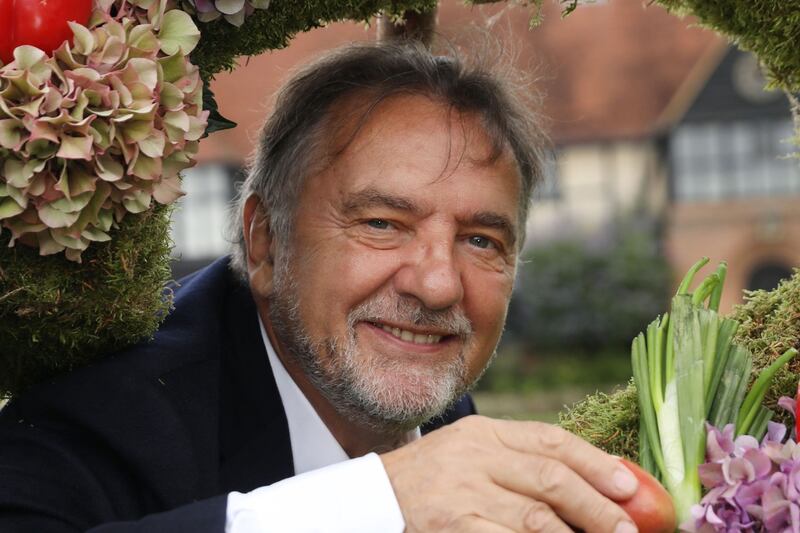RAYMOND Blanc is in excellent spirits. Outdoor dining is back on the menu, meaning the chef’s Brasserie Blanc restaurants have reopened – and despite the “freezing” conditions, the Blanc empire has “created some beautiful open marquees” complete, of course, with heaters.
Le Manoir aux Quat’Saisons, his two-Michelin starred Oxfordshire restaurant, is also fully booked for the next six months.
It is cause for “a bit of joy in our team and of course a lot of laughter and celebration amongst our guests”, says Blanc on the phone. But he is cautious too. “There’s some reserve because, as you know, you don’t know what’s going to happen next.
“We all pray on the wing, so to speak,” he continues. “We pray we’re going to learn to live with Covid and it’s not going to destroy people’s lives nor businesses anymore.”
If you’re in the restaurant game, the pandemic has been particularly brutal, and for Blanc (71) it took a directly personal toll too. Following a cough and a positive Covid test result, he found himself admitted to the Covid high dependency unit at John Radcliffe Hospital, Oxford, and was there for a month.
“The first two weeks I was completely out, it was extraordinary,” he recalls. “You didn’t know which way it would go.”
Having spent much of the pandemic up until that point “cooking my heart out”, you’d think the shift to hospital food and being unable to fix his own dinners would’ve added to an already scary and difficult situation, but Blanc is pragmatic.
“It was really, really very severe Covid and that means you didn’t think of it,” he says now. “Hospital food reminded me maybe that I missed my own cooking, but Natalia [Traxel, his long-time partner] would always bring me some lovely food from home” – but this was only after three weeks, when Blanc was more “with it” and able to appreciate eating properly again.
He is not remotely scathing about the hospital fare he encountered though. It is “not renowned and I can understand it, there is so little budget,” he notes, but as a patient, “you’re not looking for a three-star Michelin meal, you just eat whatever is in front of you. And I must say, some of it was very, very good, especially the desserts.
“Many chefs, many establishments, have tried to change the food in hospitals, but there’s always this issue of cost,” he continues. “I think they do their best with what they have. I’m amazed actually, the food always came piping hot, on time. I was very grateful.”
However, when he “started to regain a bit of colour on my cheeks”, he did begin to rather miss a nice glass of wine. “It took me two-and-a-half months before I could drink any wine, because I couldn’t enjoy it! It was like vinegar.” This was less to do with Covid, he says (“I never lost my taste, that’s one of the most remarkable things”), and more due to “all sorts of medicines they give you; your tongue is like a cheese grater.”
The flavour of his new book, Simply Raymond, is very much tinged by his and the collective experiences of pandemic life – be it how many of us have become increasingly connected with what we’re eating, where it’s come from and who grew it, or just the fact we’ve done so much more cooking than before.
“This little book is really all about the joyful experience of cooking – it’s my cooking, from my home to yours,” explains Blanc with real feeling. It is full of “unfussy recipes. They are driven by simplicity, by seasonality, by real values. And you don’t need expensive gadgets, no sous vide machines or anything like that. It’s enjoyable.”
It is also imbued with the love he has for his late mother, Maman Blanc, and his respect for French author and scientist Edouard de Pomiane, whose book, Cooking In 10 Minutes, was the initial blueprint for Simply Raymond.
“He was a genius, in so much he understood that the world was changing,” says Blanc of Pomiane. “He had already noticed in his time that people didn’t take the time to eat properly.”
The need to be able to whip up dinner in 10 minutes became less important once we were all in lockdown though. Cooking suddenly became a source of relaxation, comfort and distraction for lots of us. “It’s wonderful to see that small revolution,” says Blanc.
So rather than a place for swift recipes, Simply Raymond became a book that instead “demystifies cooking, it simplifies it. It makes it accessible. It gives you confidence.” And technique is key. “Once you can pan fry a steak, you can pan fry anything,” says Blanc. “This technique will give you thousands of recipes.”
Many of the practical and logistical aspects – from relying on water instead of stock, to the mantra ‘You shalt not waste’ – come courtesy of his mother, who died in 2020 aged 97.
“I come from a working background, and we didn’t have very much money,” says Blanc, who grew up in the Franche-Comté region of France. “We had a huge garden. My mum was a former farmer, so she really knew all about simple home cooking because she had to feed a family of seven – and every day.”
Simply Raymond he says is “a great tribute to my Maman Blanc. This is my gift to her because her gift to me has been enormous in my life: a foundation and my values towards foods, towards people.” You can feel it on every page.
Simply Raymond: Recipes From Home by Raymond Blanc is published by Headline Home on April 29, priced £25. Photography by Chris Terry. Below are two recipes from the page for you to try.
MUSSEL AND SAFFRON RISOTTO
(Serves 4)
For the mussels:
1kg fresh mussels
1 onion
2 bay leaves
2 thyme sprigs
1tbsp unsalted butter
100ml dry white wine
For the risotto:
1 garlic clove
1tbsp unsalted butter
200g carnaroli rice (or arborio)
2 bay leaves
A couple of pinches of saffron powder or strands
Pinch of cayenne pepper
2 pinches of sea salt flakes
100ml dry white wine
300ml water (or fish stock)
To finish:
50g Parmigiano Reggiano cheese
2tsp unsalted butter, at room temperature
A handful of coarsely chopped flat-leaf parsley
100g cooked peas (optional)
A handful of baby-leaf spinach (optional)
½ lemon, for squeezing
Method:
Ensure the mussels are tightly closed before you begin to cook; discard damaged or open ones. Wash them in a large bowl under cold running water.
Mussels that float at this stage are not very fresh, so discard them. Remove any barnacles and beards, but don’t scrub the shells. Drain.
Finely chop the onion and peeled garlic and grate the cheese. In a large saucepan over a medium heat, sweat half the onion, the bay leaves and thyme in the butter for one minute. Increase the heat to high, add the mussels, pour in the wine, cover with a lid and cook for three minutes.
Drain in a sieve over a large bowl and discard any mussels that have not opened. Reserve the cooking juices; you will need about 200ml to make the risotto. Once the mussels have cooled, pick them from their shells, leaving a few in their shells for decoration, and put them all aside.
Melt the butter in a large saucepan on a medium heat. Add the remaining onion, cover with a lid and cook for two to three minutes, until the onion is translucent. Add the garlic and stir in the rice. Add the bay leaves, saffron and cayenne pepper and lightly season with salt. Stir and continue to cook on a medium heat for two minutes, until the grains of rice are shiny.
Pour in the wine and let it boil for 30 seconds and stir. Pour in the mussel cooking liquor and the stock and stir again. Cook on the gentlest simmer, with just a single bubble breaking the surface. Cover with a lid and leave for 20 minutes, but it mustn’t boil.
Now it’s time for five minutes of some serious and fast stirring. At full speed, stir the risotto. The grains rub against each other, extracting the starch, and this gives the rice its creaminess. Yet every grain remains whole, unbroken. The rice should have a slight bite.
Add the cheese, butter and parsley, along with the cooked peas and spinach, if using, all the cooked mussels and a strong squeeze of lemon. Stir, taste and correct the seasoning just before serving.
FLOURLESS CHOCOLATE MOUSSE CAKE
(Serves 8-10)
For the chocolate sponge:
Butter, for greasing the tin
4 medium eggs
125g caster sugar
35g cocoa powder
For the chocolate mousse:
160g dark chocolate (70 per cent cocoa solids)
25g cocoa powder
1 medium egg yolk (preferably organic or free-range)
3tbsp hot water
6 medium egg whites (preferably organic or free-range)
25g caster sugar
To serve (optional):
Cocoa powder, for dusting
Grated dark chocolate
A handful of pistachio nuts or almonds, chopped and toasted in a dry pan
Method:
Preheat the oven to 170C/150C fan. Begin by making the chocolate sponge in a cake tin (preferably a springform one, 15cm diameter). Cut a circle of greaseproof paper to cover the tin’s base, and lightly butter the paper on both sides.
Separate the eggs – yolks in one bowl, whites in another. In a food mixer on full power, whisk the egg whites to firm peaks, adding the sugar little by little. Take a third of the whisked egg whites and whisk them into the egg yolks. Once incorporated, gently fold in the remaining whisked whites. Now sift and fold in the cocoa powder.
Pour the mixture into the prepared cake tin and spread it evenly with a spatula or palette knife. Bake for 18–20 minutes, or until a skewer inserted into the middle comes out clean. Allow the sponge to cool before removing it from the tin. Leave it to cool on a wire rack.
Clean the cake tin. Carefully remove the paper from the base of the sponge. Now put the cooled sponge back in the ring, ready to have the chocolate mousse mixture poured over it.
Chop the chocolate into bite-sized pieces and melt them in a large heatproof bowl in a saucepan of gently simmering water. The melted chocolate should be hot to the touch to ensure it is well incorporated in the next stage. Sift the cocoa powder into a separate bowl and whisk it with the egg yolk and hot water. Pour this on to the melted chocolate but do not mix.
Whisk the egg whites and sugar to medium peaks. Briskly whisk about a third of the whisked egg whites into the melted chocolate, and then fold in the remaining egg whites.
Pour the mousse mixture onto the chocolate sponge in the ring. Transfer it to the fridge to set for at least three hours.
To remove the flourless chocolate mousse cake, heat a palette knife in a bowl of hot water, wipe it with a clean tea towel, and then slide it around the inside of the tin. Before serving, decorate with a dusting of cocoa, a sprinkling of grated chocolate and chopped toasted pistachios or almonds, if using.







